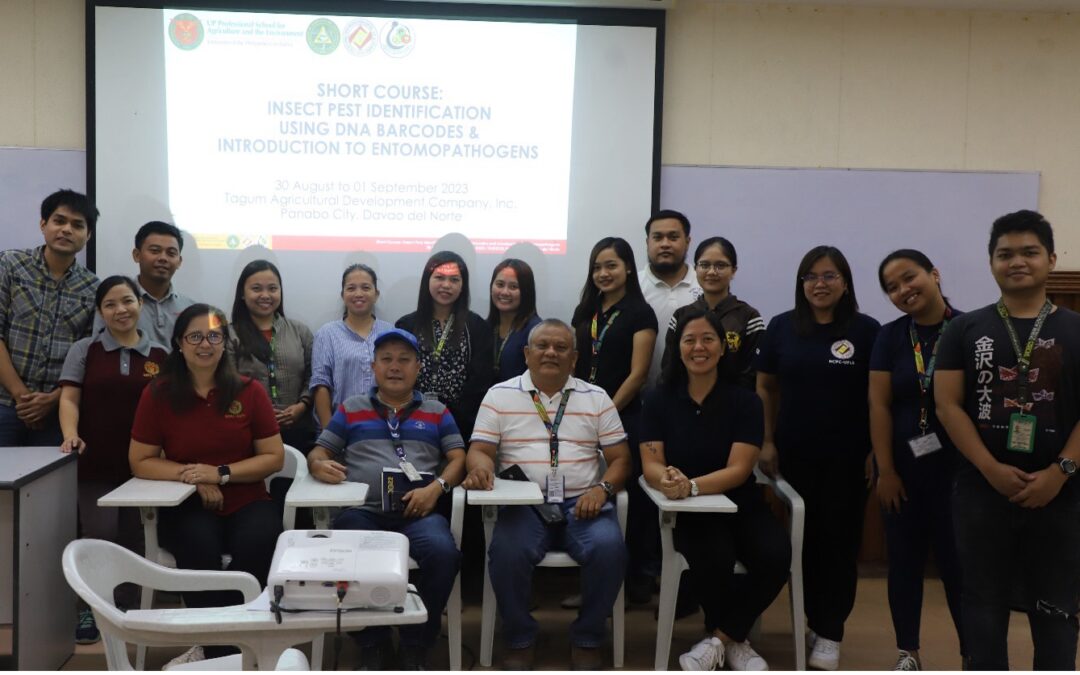Participants of the short course with (seated from L-R) Dr. Barbara L. Caoili, (NCPC director), Euberto S. Catayas (AVP-RICD of TADECO), Mario Jumamoy (manager – ENRDD of TADECO), and Dr. Maria Catalina T. De Luna (UPPSAE director)
The National Crop Protection Center, in collaboration with the UP Professional School for Agriculture and the Environment (UPPSAE) and the Institute of Weed Science, Entomology, and Plant Pathology (IWEP), conducted a short course on Insect Pest Identification using DNA Barcodes and Introduction to Entomopathogens at the Tagum Agricultural Development Company’s (TADECO), Panabo City, Davao del Norte last August 30 to September 1.
The event started with welcome remarks from Euberto S. Catayas of TADECO, followed by opening remarks from Dr. Maria Catalina T. De Luna, the director of the UPPSAE.
The participants learned how to use DNA barcodes in insect identification through the lecture of NCPC Director Barbara L. Caoili. DNA barcoding is a reliable and effective taxonomic tool used to determine species not just limited to insects, especially for stages that are morphologically difficult to distinguish. She emphasized the importance of correct pest identification in developing a suitable pest management strategy. The course had an in-depth discussion and activity on the three main steps of DNA barcoding.
Michelle S. Guerrero, a university researcher at NCPC, discussed the proper DNA isolation techniques, which is the first step in DNA barcoding. Each of the participants experienced isolating the DNA of either a mealy bug or aphid during the laboratory activity.
Subsequently, Romnick A. Latina, an assistant professor at IWEP, explained and demonstrated the second step – how to amplify the DNA barcodes. The trainees were exposed to DNA amplification using polymerase chain reaction (PCR). Then, they practiced gel electrophoresis. Based on the visualization of the PCR product, the participants and the resource persons succeeded with the DNA barcoding.
Dr. Gelyn D. Sapin, an assistant professor at IWEP, virtually led the discussion and demonstration of the last major step, the basics of DNA sequence analysis. The participants were able to analyze DNA sequences using Bioedit.
The course also covered the discussion about the pathogenesis of entomopathogens. Entomopathogens are microorganisms such as bacteria, fungi, nematodes, and viruses that can biologically control insect pests. The resource persons discussed how to collect and mass produce entomopathogens.
All the ten participants passed and finished the course. (First published in the Aggie Green & Gold newsletter, September 2023 issue)








